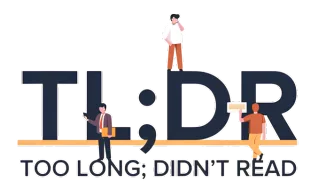A significant financial wave just rolled through the digital asset space. Tempo, a blockchain project incubated by two heavyweights, Stripe and Paradigm, recently closed a Series A funding round. This round brought in a substantial $500 million, pushing Tempo’s valuation to roughly $5 billion.
- Tempo, a new Ethereum-compatible Layer 1 blockchain incubated by Stripe and Paradigm, has secured $500 million in Series A funding, valuing the project at approximately $5 billion. This funding round was led by Thrive Capital and Greenoaks, with participation from other notable investors.
- The project is designed for high-speed payments and settlement, aiming to address critical bottlenecks in blockchain adoption for large-scale financial transactions. It has already attracted collaborations with major companies like OpenAI, Shopify, and Visa.
- Stripe’s investment in Tempo is part of its broader strategy to expand its presence in the digital asset space, following acquisitions of stablecoin infrastructure firm Bridge and crypto-wallet provider Privy, as well as integration with Coinbase’s Base network.
This is not pocket change. It signals a serious vote of confidence from major investors. Thrive Capital and Greenoaks led the round, according to a Fortune report. Sequoia Capital, Ribbit Capital, and SV Angel also joined the funding. Interestingly, both Stripe and Paradigm, the project’s incubators, did not invest in this particular round.
So, what exactly is Tempo? It is an Ethereum-compatible Layer 1 blockchain. Think of a Layer 1 as the foundational network, the main road for all the traffic. Tempo is built specifically for high-speed payments and settlement. It is like a dedicated express lane for financial transactions, designed to handle immense volume.
The project is not just a whitepaper concept. It is already working with some very big names. OpenAI, Shopify, Visa, Anthropic, and Deutsche Bank are among the firms collaborating with Tempo. Stripe CEO Patrick Collison mentioned these partnerships in earlier statements, highlighting Tempo’s real-world application.
Collison first spoke about Tempo in September. He described it as “the payments-oriented L1, optimized for real-world financial-services applications.” That is a mouthful, but the meaning is clear: Tempo wants to be the go-to blockchain for businesses handling large numbers of transactions. Paradigm co-founder Matt Huang, who also sits on Stripe’s board, is leading this initiative.
Stripe’s Growing Digital Footprint
This half-billion-dollar injection into Tempo adds serious fuel to Stripe’s expanding crypto strategy. Stripe, a fintech giant valued at $92 billion, has been busy. The company has spent the past year deepening its exposure to the digital asset world.
They have been on a bit of a shopping spree. Stripe acquired Bridge, a stablecoin infrastructure firm, for $1.1 billion. Stablecoins are digital currencies pegged to a stable asset, like the US dollar. They are crucial for payments because their value does not swing wildly.
Then came Privy, a crypto-wallet provider, which Stripe bought in June. A crypto wallet is simply where people store their digital assets. Having their own wallet technology gives Stripe more control and integration points. It is all part of building a more complete ecosystem.
Stripe also integrated Coinbase’s Base Layer 2 network into its crypto payments stack. A Layer 2 network builds on top of a Layer 1, like Ethereum, to make transactions faster and cheaper. This shows Stripe is not just building its own tech but also connecting to existing, popular infrastructure.
These moves paint a clear picture. Stripe is not just dipping a toe into crypto. They are diving in, headfirst, with a strategy focused on making digital payments seamless and efficient for businesses. Tempo fits perfectly into this larger vision, aiming to solve the underlying infrastructure challenges.
Permissionless Ideals and Future Payments
The news of Tempo’s funding round arrived shortly after another significant announcement. Dankrad Feist, a prominent researcher from the Ethereum Foundation, joined Tempo as a senior engineer. When a top mind from the Ethereum world makes such a move, it certainly turns heads.
Feist offered his perspective on joining the project. He said Tempo shares Ethereum’s “permissionless ideals.” What does that mean, exactly? It means the network is open for anyone to use, without needing approval from a central authority. This is a core tenet of many blockchain projects, aiming for open access and censorship resistance.
He also stated that Tempo is “built for the next era of on-chain financial services.” This phrase hints at a future where more and more financial transactions happen directly on a blockchain. Imagine your everyday payments, from buying coffee to paying bills, settling instantly and transparently on a digital ledger.
Tempo’s focus on high-throughput payments addresses a critical bottleneck for widespread blockchain adoption. Current networks, while innovative, often struggle with the sheer volume of transactions needed for global commerce. Tempo aims to solve that, providing the plumbing for a new financial system.
The backing from major investors and the recruitment of top talent suggest Tempo is positioning itself for a serious run. It is a project to watch, especially for anyone interested in how the future of payments might unfold on the blockchain.

